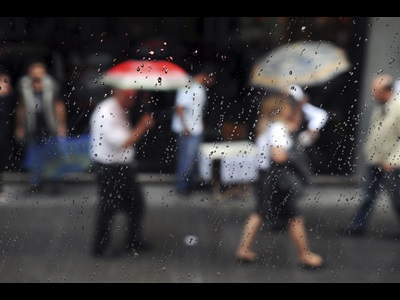We’ve joined forces with DTU Environment and DTU Compute – from the technical university of Denmark – as well as Danish municipal corporation Aarhus Water. Together, we’ll develop a solution that uses real-time control of drainage systems instead of building new capacity.
The climate is changing, with heavier-than-normal rainfall events being recorded in several parts of the world. When drainage systems are unable to handle all the additional water brought on by heavy rains, it results in pluvial flooding, with consequent material damage.
Danish municipalities have already started taking action to effectively handle urban flooding. To cope with heavy rains, the capacities of existing drainage systems are being expanded by building additional basins, for instance. However, the need for new drainage capacity can be significantly reduced, if the existing drainage systems are utilised better.
The core of our solution is a software product that gathers and calculates data for rain and water flows in order to enable real-time control and warning. By using the information of the current location of water in the system and predicting its future flows, it’s possible to find the optimal setting of the drainage systems components. By controlling the water flow, we can ensure that water is moved to the basin or treatment plant that enables optimal utilisation of the drainage system. In so doing, it’s possible to significantly reduce the need for new storage and investments.
The project builds on ‘Samstyring’ – a solution that we developed and tested on a full scale with Aarhus Water and partners. The goal for Aarhus then was to avoid overflows with untreated sewage during design events – rainfall events that a drainage system is designed for. 
During extreme rain events with consequent urban flooding, the project will look into options for evaluating and controlling water on the ground. By doing this, it’ll be possible to direct the water to locations where it’ll do the least amount of damage.
The implementation of the solution in Aarhus municipality has been successful and the project will expand on this solution in order to make it applicable more generally. The solution needs to be flexible enough for implementation in other cities – both nationally and internationally. The final product will be a combination of a consultancy effort and a software product that encapsulates the core knowledge.
Realdania is supporting the project through the Klimaspring campaign.
Facts about Klimaspring:
Klimaspring is a Realdania campaign that supports commercial development of new solutions for water management in dense existing urban areas. The ambition is to create green growth, better cities and put Denmark on the world map for climate change adaptation. Klimaspring provides technical and financial support to participating companies through the entire process, from the initial idea till solution is implemented in the market. Realdania has allocated 60 million DKK for the campaign, which runs from 2013 to 2017. Smith Innovation is in charge of the secretariat for Klimaspring.